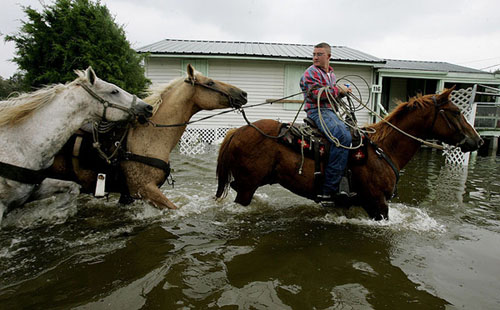
From North Dakota State University Extension:
After a flood, stalls and paddocks need to be cleaned and disinfected before horses can go back to those areas.
Charlie Stoltenow, DVM, North Dakota State University Extension Service veterinarian, and Carrie Hammer, DVM, PhD, NDSU Extension equine specialist, recommend removing any bedding, feed, manure, debris, or mud and sweeping or scrubbing stall and barn walls and floors and fencing, then using a pressure washer with a strong detergent to wash all surfaces. Some surfaces that are heavily stained might have to be scrubbed by hand.
The next step is disinfecting the surfaces that floodwaters touched. Flood cleanup authorities say phenolic compounds such as Tek-Trol or 1-Stroke Environ might be preferable to chlorine, but chlorine is readily available and one of the most economical disinfectants.
Stoltenow and Hammer said the disinfectant can be used in a sprayer. It should be sprayed on all surfaces and allowed to dry–do not rinse the disinfectant off.
Wood that has been submerged in water will absorb a large amount of the water, so drying it could take several weeks. Flood recovery authorities say that means any restoration, recovering, or repainting of structures such as walls of barns or stalls will have to wait until the wood is dry to prevent mold development.
Here are some steps to clean paddocks that were flooded:
* Remove feces from dirt paddocks.
* Drag paddocks during dry times to help dry manure.
* Reseed bare spots.
* Prevent overgrazing to reduce the potential spread of equine pathogens.
* Check the soil pH (acidity or alkalinity) and add lime if necessary. If the pH is too low, lime will improve the pasture’s fertility and help reduce pathogenic organisms.
Hammer and Stoltenow said buckets and portable feeding or drinking devices also need to be scrubbed, disinfected and dried. But unlike stall walls and floors, anything from which a horse will eat or drink should be rinsed after the disinfectant has dried.
